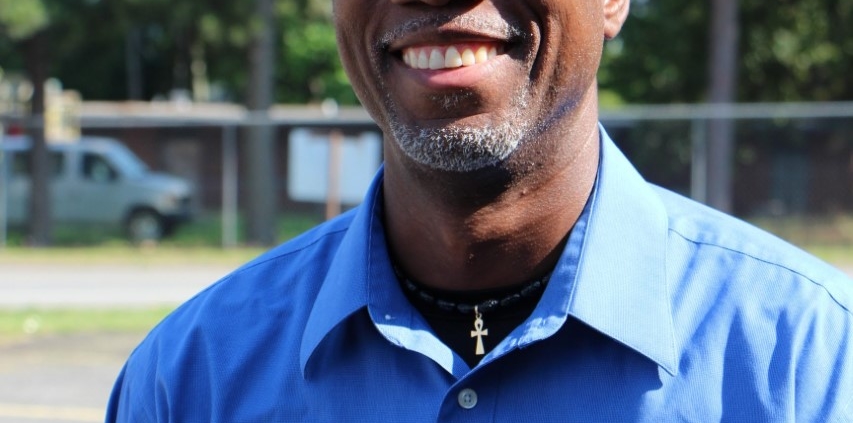What Does Miller vs. Alabama Mean To Me?
by Kaleem Nazeem
June 25, 2022
In answering this question I must look at it from a historical perspective. I also must reflect upon two days of my carceral experience. On the first day in question, I was transferred to the Cummins Unit in Grady, Arkansas. And on the second, I was released after serving 28 years and 11 months on a juvenile life without parole sentence. These two days are very important in encapsulating my experience. These two days speak to my mental, emotional, and physical condition.
The day I was transported to the Cummins Unit was the day that I realized that I was in modern-day slavery. As the van was driving down the rows upon rows of cotton fields, I could not help but feel that I was in some kind of time warp that was transporting me to a time in history where my black skin classified me as not being human – a time in our history that was not only shameful, but also brutal and inhumane. No matter what direction I looked, there were cotton fields. As the unit started coming into view, I could see these black dots in the fields, not knowing what they were. Once we got closer, I recognized that what once were just dots had materialized into human beings.
These individuals were scattered throughout the fields with cotton sacks slung over their shoulders. It wasn’t hard to see their defeated posture and body language. If this was not enough to send me into a sensory overload, I only had to look at the white men on horses carrying shotguns overseeing the work detail. In that moment, 400 years of chattel slavery, oppression, and dehumanization weighed on my spirit.
There is no way that I can explain 28 years and 11 months of oppression. However, if you will allow yourself to use the above story as a reference point and read between the lines, you will be able to graze against the conditions of my confinement.
For myself and others who were similarly situated, Miller vs. Alabama was like the Emancipation Proclamation for those who were held in slavery in the 1800s. Both were documents that were enacted by our government. Each had a moral component which restored hope and dignity to a class of people (and our nation) who had been exploited, oppressed, and marginalized by our government and society as a whole. When the Miller ruling came down from the U.S. Supreme Court in 2012, there were a lot of questions and debates about the process of implementation. The big debate was whether it was the Court’s intention to apply the ruling retroactively. As I read over the language of the ruling, I could not help but think of the Act Prohibiting Importation of Slaves that was enacted in March of 1807. This law provided that no new slaves were permitted to be imported to the United States, with the caveat that captives who were already here would remain in slavery. If the Miller ruling was not applied retroactively, this would have been equivalent to the Court saying, “you can keep the juveniles who were already sentenced to life without parole in prison – just don’t do it in the future.” Then in 2016, the Supreme Court ruled in Montgomery vs. Louisiana that Miller should be retroactively applied. This was a game changer for all those who were juveniles at the time of their sentencing and had been praying and hoping for liberation. We were given the opportunity to explore the concept of freedom without the restrictions of walls and steel barriers. There was a big paradigm shift in the minds of myself and others. The Miller ruling gave me the opportunity to re-envision my life and recreate myself on my own terms. I set goals and immediately started working to accomplish them.
On August 10, 2018, I walked out of prison. There was a sense of jubilee that I can’t explain in words because it was overwhelming on so many levels. They say when you are dying, your life flashes before your eyes. But the day I was released after having served 28 years and 11 months, I was born. I was fearful, happy, ashamed, overjoyed, sad, apprehensive, and optimistic all at the same time and each of these emotions came from different places. As I walked out of the prison gates, my family and loved ones asked me how I felt. I didn’t know how to process it because I was feeling so much. I was glad to be free, but I also felt like I was abandoning my family on the inside. I felt undeserving because I was leaving behind so many good men that I had grown to love as brothers. These men had mentored me and given me the information that helped me become a better man.
About one year after I was granted my freedom, I watched the movie 12 Years A Slave. The cinematic depiction of Solomon Northup regaining his freedom encapsulated the feelings that I had. When they showed the scene of him looking back at Patsy, and him knowing that he couldn’t take her with him, it mirrored my emotions.
This and much, much more is what the Miller vs. Alabama ruling means to me.
***
Kaleem Nazeem was released from prison on August 10, 2018 after serving 28 years and 11 months. Today, he is a proud member of the Incarcerated Children’s Advocacy Network. Since his release, he has received his associate’s degree in Energy Control from ASU-Newport and advocated for fair sentences for juveniles, prison reform, and social justice for impoverished communities. Kaleem works as a Movement Builder with DecARcerate. Additionally, he volunteers with the Arkansas Poor People’s Campaign, works with incarcerated youth at the Jonesboro Juvenile Detention Center, and serves as a board member for Compassion Works For All (CWFA).



